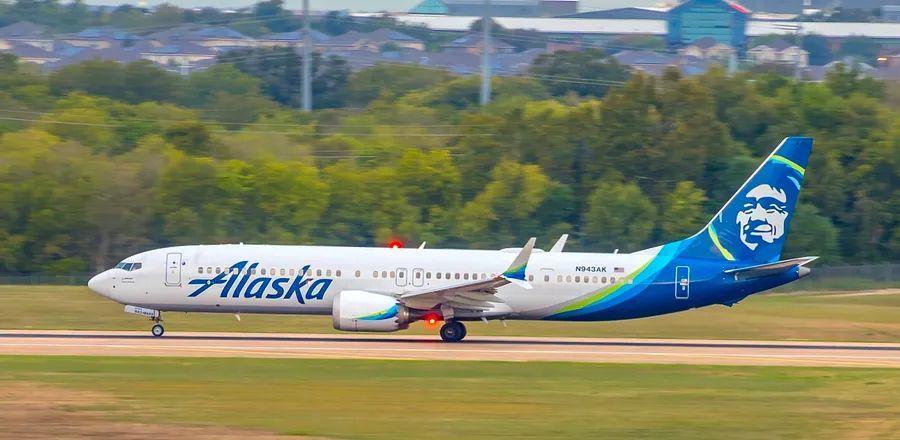Alaska Airlines Incident Reignites Concerns Over Boeing 737 Max as Multiple Planes Are Grounded

This past weekend, the Federal Aviation Administration (FAA) halted operations on all Boeing 737-9 Max aircraft following a distressing event on Alaska Airlines flight 1282, where a plug door near the rear of the plane blew out at 16,000 feet just six minutes after takeoff from Portland, Oregon, en route to Ontario, California, leading to a cabin pressure loss. Oxygen masks were activated, and passengers reported a turbulent experience as the plane swiftly returned to Portland; thankfully, there were no serious injuries, although several of the 177 passengers received treatment for minor injuries. This incident led to a widespread grounding of most of the 215 Boeing 737-9 Max planes in operation globally.
Alaska and United Airlines, which together manage 144 Max 9 jets, promptly grounded their fleets, resulting in the cancellation of hundreds of flights and affecting tens of thousands of travelers. Disruptions are anticipated to persist throughout the week and potentially longer as safety inspections are carried out.
The immediate consequences for air travel
The grounding of the 737-9 Max has had a major effect on our operations,” Alaska Airlines stated in a press release on Sunday night. Over 230 flights were canceled on Sunday and Monday, with the most significant disruptions occurring at Alaska’s Seattle hub. “Cancellations are expected to continue into the first half of the week,” the airline added, urging travelers with scheduled flights to check their emails and visit alaskaair.com for further updates.
United, the leading operator of the Max 9 with 79 aircraft, canceled approximately 375 flights over the weekend, representing about 9 percent of its total schedule, as reported by FlightAware.com. Turkish Airlines has grounded five Max 9 jets, while Aeromexico has grounded 19. Other operators include Icelandair and Copa Airlines from Panama, according to aviation data firm Cirium.
Regarding the incident's cause, the initial investigation is concentrating on a section of the fuselage called an exit-door plug, which is a panel that can cover an area meant for an additional exit door, depending on the aircraft's configuration. The number of exits corresponds to the number of passenger seats; in configurations with fewer seats, fewer exits may be necessary, and this area can be sealed with a panel, like the one on the Alaska flight 1282 jet. (Reports on early Monday indicated that the misplaced panel was retrieved from a homeowner’s backyard in Portland.)
Implications for Boeing 737-9 Max aircraft and aviation safety
The FAA is mandating that operators ground their Boeing 737-9 Max aircraft for inspections, which are expected to take between four to eight hours per plane. However, as the investigation into the cause of the door blowout accelerates, it remains uncertain how long it will be before these planes can be put back into service.
On Monday, United Airlines disclosed that it had discovered loose bolts on some Boeing 737-9 Max aircraft during fleet inspections, raising further concerns.
The Alaska Airlines aircraft is a different version of the 737 than the Max 8, which was involved in two fatal crashes that led to a nearly two-year global grounding of the Max series in 2019. However, since it belongs to the same aircraft family, the recent incident is raising safety concerns among travelers regarding its overall safety record.
John Goglia, a former member of the National Transportation Safety Board (NTSB) and aviation safety expert, stated, “It doesn’t seem there’s any connection” between last weekend’s incident and the design flaws that caused the 2019 Max groundings.
Despite the safe landing with no serious injuries, Goglia cautions against complacency, emphasizing that “the outcome could have been much worse” had the plane been at cruising altitude (around 34,000 feet). A crucial factor in ensuring the safety of passengers on Alaska Airlines flight 1282 was that they were seated and buckled during the climb shortly after takeoff. He also points out that this incident serves as another reminder, following the earlier Japan Airlines flight that caught fire, that aircraft can endure severe challenges and still land safely.
At a recent news conference, NTSB chair Jennifer Homendy announced that the agency will thoroughly examine maintenance and safety records to uncover the cause of the incident, a process that may take some time. Nevertheless, she reassured the public about the safety of air travel.
“We have the safest aviation system in the world. It’s incredibly safe,” she asserted, noting that the United States “sets the benchmark for global air safety.” Ultimately, she concluded, “We must uphold that standard.”

1

2

3

4

5
Evaluation :
5/5